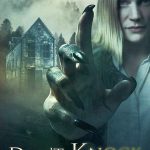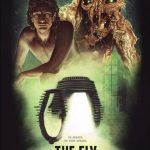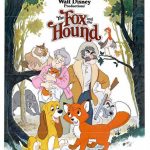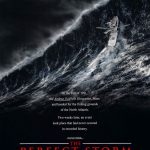Strange Magic (2015)

Strange Magic (2015), directed by Gary Rydstrom, is a whimsical animated film that blends fantasy, romance, and music into a unique adventure. Produced by Lucasfilm, the studio known for Star Wars and Indiana Jones, the film is a lesser-known project that combines elements of Shakespeare’s A Midsummer Night’s Dream with an eclectic pop music soundtrack. Despite its ambition, Strange Magic struggled to make an impact upon release, receiving mixed reviews for its storyline, animation style, and tonal inconsistencies. However, it still holds a certain charm for those who appreciate quirky, music-driven animated films.
Suggested videos for you:
Plot Overview
The film takes place in a magical forest divided by an invisible barrier into two distinct realms: the Bright Realm, inhabited by fairy-like creatures, and the Dark Forest, ruled by an eccentric and menacing Bog King (voiced by Alan Cumming). The plot follows Princess Marianne (voiced by Evan Rachel Wood), who is heartbroken after her fiancé, Sir Ibrahim (Alfred Molina), betrays her. She becomes fiercely independent and swears off love.
However, love is thrust upon her once again when she meets the brooding Bog King, who is also determined to avoid love due to past heartbreak. The movie follows their comical, adventurous journey as they confront their feelings and discover that love isn’t just a simple matter of hearts and flowers—it’s complicated, messy, and sometimes full of unexpected magic.
The story also features a host of other characters, including the fairy-like Dawn (Maya Rudolph), the villainous Dark Fairy (Kristen Chenoweth), and a host of other magical creatures, each contributing to the movie’s vibrant world.
Themes and Emotional Resonance
At its core, Strange Magic is about love, forgiveness, and self-discovery. It draws inspiration from A Midsummer Night’s Dream by exploring themes of unrequited love, mistaken identity, and the irrationality of romantic feelings. The central characters, particularly Princess Marianne and the Bog King, are both struggling with their personal vulnerabilities and negative experiences with love.
While the story tries to deliver messages about moving past old wounds and being open to new possibilities, its emotional resonance can feel shallow at times. The film’s attempt to blend humor, romance, and darker themes creates tonal shifts that may be jarring, making it difficult for the audience to fully connect with the characters’ emotional journeys. Despite these tonal inconsistencies, the movie ultimately reinforces the idea that love is transformative and that it often requires vulnerability and courage to embrace it fully.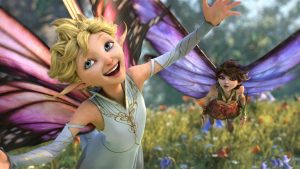
Characters and Performances
1.Princess Marianne (Evan Rachel Wood): As the feisty and heartbroken heroine, Marianne is a character driven by independence and emotional scars. Wood brings both strength and vulnerability to the role, though the character’s emotional arc can feel rushed and underdeveloped at times.
2.Bog King (Alan Cumming): The misunderstood villain-turned-hero, Bog King is a more complex character than he initially appears. Alan Cumming’s performance infuses him with a certain gravitas, though his character’s transition from hardened loner to love interest is somewhat abrupt.
3.Dawn (Maya Rudolph): The playful and optimistic fairy who serves as Marianne’s best friend, Dawn adds light-hearted energy to the film. Maya Rudolph’s voice work is charming and fun, bringing a quirky yet endearing quality to the character.
4.The Dark Fairy (Kristen Chenoweth): Kristen Chenoweth’s portrayal of the villainous Dark Fairy is one of the movie’s standout performances. With her high-pitched, menacing tone, she offers some much-needed drama and tension.
5.Other Supporting Characters: The rest of the supporting characters—such as the diminutive Sunny (Elijah Kelley), a hopeless romantic in the Bright Realm—add to the film’s comedic elements. Though some are charming and entertaining, others feel like side notes to the central romance.
Animation and Visuals
The animation in Strange Magic is colorful and visually imaginative, with vivid landscapes that separate the Bright Realm from the Dark Forest. The design of the characters ranges from whimsical, fairy-like beings to more grotesque creatures, creating a stark contrast between the two realms. The forest setting itself is lush, magical, and filled with vibrant details that help immerse the viewer in its fantastical world. However, the animation style feels slightly dated compared to other animated films released around the same time, lacking the fluidity and polish of more contemporary animations.
The character designs also feel somewhat exaggerated and cartoonish, with exaggerated expressions and movements that emphasize the film’s comedic nature. However, the overall visual appeal doesn’t quite match up to the complexity of its world-building, leading to a sense of imbalance in the film’s aesthetics.
Music and Soundtrack
One of the most notable aspects of Strange Magic is its eclectic soundtrack, which features an array of pop songs, including classic hits like “I Can’t Help Myself (Sugar Pie, Honey Bunch)” by The Four Tops, “Stronger” by Kanye West, “Love Is All Around” by The Troggs, and “Sugarhill Gang’s Rapper’s Delight.” The music is used as a storytelling device, with characters singing songs that reflect their emotions and desires.
While the music selection is diverse and energetic, it feels somewhat forced at times, with songs that don’t always blend seamlessly into the plot. The soundtrack is clearly meant to appeal to a wide range of audiences, but it may feel jarring to those expecting a more traditional musical approach. Nonetheless, the music adds a certain fun and spontaneity to the film, even if it doesn’t always enhance the emotional beats.
Legacy and Impact
Strange Magic failed to make a significant impact at the box office and with critics, which may be attributed to its inconsistent tone, predictable plot, and mismatched musical numbers. However, it remains a cult film for those who appreciate quirky animation and fantasy tales. It has a small but loyal fanbase who enjoy its light-hearted spirit and eccentric characters.
Despite its shortcomings, Strange Magic offers a refreshing departure from the typical animated fare, and it is a film that some may find enjoyable for its whimsical nature and catchy soundtrack.
Conclusion
Strange Magic is a quirky and visually imaginative film that tries to combine fantasy, romance, and music in a way that is both fun and whimsical. While the animation and soundtrack offer some appeal, the film suffers from an uneven tone, underdeveloped characters, and a predictable storyline. It is certainly a film that has its moments, but it lacks the emotional depth and narrative complexity that would have made it truly memorable. For those looking for an offbeat animated adventure with an energetic soundtrack, Strange Magic offers a whimsical, if imperfect, experience.
Strange Magic (2015): An Underappreciated Animated Fantasy Musical
Strange Magic (2015), directed by Gary Rydstrom, is a whimsical animated film that blends fantasy, romance, and music into a unique adventure. Produced by Lucasfilm, the studio known for Star Wars and Indiana Jones, the film is a lesser-known project that combines elements of Shakespeare’s A Midsummer Night’s Dream with an eclectic pop music soundtrack. Despite its ambition, Strange Magic struggled to make an impact upon release, receiving mixed reviews for its storyline, animation style, and tonal inconsistencies. However, it still holds a certain charm for those who appreciate quirky, music-driven animated films.
Plot Overview
The film takes place in a magical forest divided by an invisible barrier into two distinct realms: the Bright Realm, inhabited by fairy-like creatures, and the Dark Forest, ruled by an eccentric and menacing Bog King (voiced by Alan Cumming). The plot follows Princess Marianne (voiced by Evan Rachel Wood), who is heartbroken after her fiancé, Sir Ibrahim (Alfred Molina), betrays her. She becomes fiercely independent and swears off love.
However, love is thrust upon her once again when she meets the brooding Bog King, who is also determined to avoid love due to past heartbreak. The movie follows their comical, adventurous journey as they confront their feelings and discover that love isn’t just a simple matter of hearts and flowers—it’s complicated, messy, and sometimes full of unexpected magic.
The story also features a host of other characters, including the fairy-like Dawn (Maya Rudolph), the villainous Dark Fairy (Kristen Chenoweth), and a host of other magical creatures, each contributing to the movie’s vibrant world.
Themes and Emotional Resonance
At its core, Strange Magic is about love, forgiveness, and self-discovery. It draws inspiration from A Midsummer Night’s Dream by exploring themes of unrequited love, mistaken identity, and the irrationality of romantic feelings. The central characters, particularly Princess Marianne and the Bog King, are both struggling with their personal vulnerabilities and negative experiences with love.
While the story tries to deliver messages about moving past old wounds and being open to new possibilities, its emotional resonance can feel shallow at times. The film’s attempt to blend humor, romance, and darker themes creates tonal shifts that may be jarring, making it difficult for the audience to fully connect with the characters’ emotional journeys. Despite these tonal inconsistencies, the movie ultimately reinforces the idea that love is transformative and that it often requires vulnerability and courage to embrace it fully.
Characters and Performances
1.Princess Marianne (Evan Rachel Wood): As the feisty and heartbroken heroine, Marianne is a character driven by independence and emotional scars. Wood brings both strength and vulnerability to the role, though the character’s emotional arc can feel rushed and underdeveloped at times.
2.Bog King (Alan Cumming): The misunderstood villain-turned-hero, Bog King is a more complex character than he initially appears. Alan Cumming’s performance infuses him with a certain gravitas, though his character’s transition from hardened loner to love interest is somewhat abrupt.
3.Dawn (Maya Rudolph): The playful and optimistic fairy who serves as Marianne’s best friend, Dawn adds light-hearted energy to the film. Maya Rudolph’s voice work is charming and fun, bringing a quirky yet endearing quality to the character.
4.The Dark Fairy (Kristen Chenoweth): Kristen Chenoweth’s portrayal of the villainous Dark Fairy is one of the movie’s standout performances. With her high-pitched, menacing tone, she offers some much-needed drama and tension.
5.Other Supporting Characters: The rest of the supporting characters—such as the diminutive Sunny (Elijah Kelley), a hopeless romantic in the Bright Realm—add to the film’s comedic elements. Though some are charming and entertaining, others feel like side notes to the central romance.
Animation and Visuals
The animation in Strange Magic is colorful and visually imaginative, with vivid landscapes that separate the Bright Realm from the Dark Forest. The design of the characters ranges from whimsical, fairy-like beings to more grotesque creatures, creating a stark contrast between the two realms. The forest setting itself is lush, magical, and filled with vibrant details that help immerse the viewer in its fantastical world. However, the animation style feels slightly dated compared to other animated films released around the same time, lacking the fluidity and polish of more contemporary animations.
The character designs also feel somewhat exaggerated and cartoonish, with exaggerated expressions and movements that emphasize the film’s comedic nature. However, the overall visual appeal doesn’t quite match up to the complexity of its world-building, leading to a sense of imbalance in the film’s aesthetics.
Music and Soundtrack
One of the most notable aspects of Strange Magic is its eclectic soundtrack, which features an array of pop songs, including classic hits like “I Can’t Help Myself (Sugar Pie, Honey Bunch)” by The Four Tops, “Stronger” by Kanye West, “Love Is All Around” by The Troggs, and “Sugarhill Gang’s Rapper’s Delight.” The music is used as a storytelling device, with characters singing songs that reflect their emotions and desires.
While the music selection is diverse and energetic, it feels somewhat forced at times, with songs that don’t always blend seamlessly into the plot. The soundtrack is clearly meant to appeal to a wide range of audiences, but it may feel jarring to those expecting a more traditional musical approach. Nonetheless, the music adds a certain fun and spontaneity to the film, even if it doesn’t always enhance the emotional beats.
Strengths
1.Visuals and World-Building: The animation is bright and creative, with a unique design that showcases the contrast between the two realms.
2.Humor and Charm: The film’s quirky, whimsical tone is filled with moments of humor and lighthearted fun, particularly in the character interactions.
3.Strong Voice Cast: The ensemble cast, including Evan Rachel Wood, Alan Cumming, and Maya Rudolph, delivers strong voice performances, adding personality and depth to their roles.
4.Pop Music Soundtrack: The eclectic music selection brings energy and humor to the film, particularly in its use of popular songs.
Criticisms
1.Uneven Tone: The film struggles with balancing its romantic, comedic, and darker themes. The tonal shifts can be jarring, and the emotional arcs of the characters feel rushed and underdeveloped.
2.Predictable Storyline: While Strange Magic draws inspiration from A Midsummer Night’s Dream, its plot lacks the complexity and depth to truly stand out. The characters’ journeys feel formulaic, and the resolution is somewhat contrived.
3.Animation Quality: While colorful and imaginative, the animation feels dated, and the character designs may not resonate with all viewers.
4.Forced Musical Numbers: The use of pop music can feel gimmicky at times, with songs that seem shoehorned into the plot rather than naturally integrated into the story.
Legacy and Impact
Strange Magic failed to make a significant impact at the box office and with critics, which may be attributed to its inconsistent tone, predictable plot, and mismatched musical numbers. However, it remains a cult film for those who appreciate quirky animation and fantasy tales. It has a small but loyal fanbase who enjoy its light-hearted spirit and eccentric characters.
Despite its shortcomings, Strange Magic offers a refreshing departure from the typical animated fare, and it is a film that some may find enjoyable for its whimsical nature and catchy soundtrack.
Conclusion
Strange Magic is a quirky and visually imaginative film that tries to combine fantasy, romance, and music in a way that is both fun and whimsical. While the animation and soundtrack offer some appeal, the film suffers from an uneven tone, underdeveloped characters, and a predictable storyline. It is certainly a film that has its moments, but it lacks the emotional depth and narrative complexity that would have made it truly memorable. For those looking for an offbeat animated adventure with an energetic soundtrack, Strange Magic offers a whimsical, if imperfect, experience.
